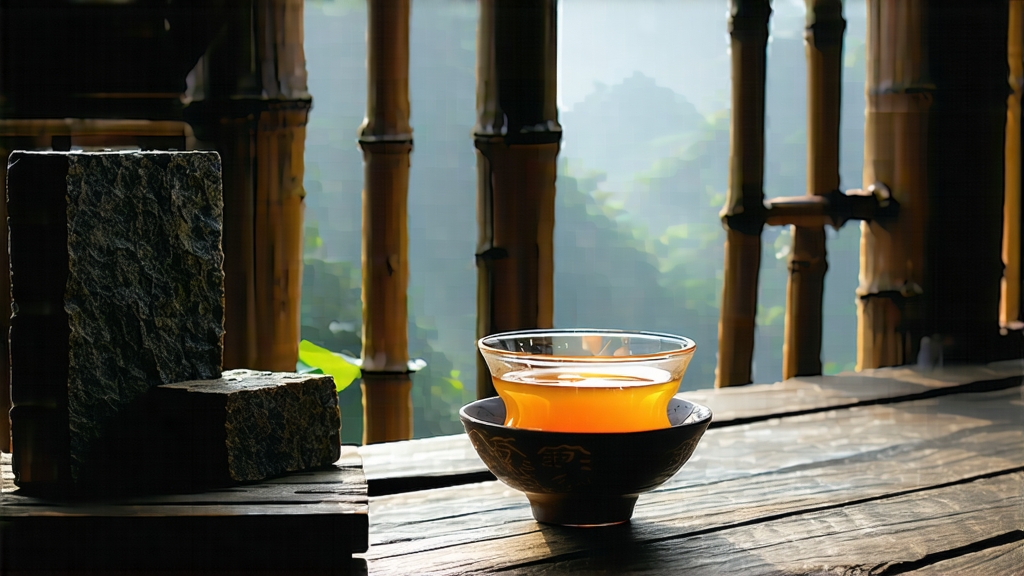
Tucked away in the subtropical hills of Guangxi Province, Liu Bao (literally “Six Forts”) is the quiet cousin of Pu-erh, a dark tea that once rode the ancient Tea-Horse Road southward to maritime Southeast Asia and, legend says, cooled the blood of dockworkers and sated the homesick miners of Malaya. While the world now chases the prestige of raw Pu-erh, Liu Bao continues its slow metamorphosis in woven bamboo baskets, developing a mellow, medicinal sweetness that connoisseurs liken to dried longan, camphor and, curiously, the faint bite of betel nut.
History: From Border Garrison to Global Cargo
The name Liu Bao refers to a cluster of six Ming-dynasty fortresses built to deter tribal uprisings along the Guijiang River. By the Qing era, the forts had become riverine warehouses where compressed tea awaited junks bound for Hong Kong, Singapore and Jakarta. In 1802 the Jiaqing Emperor granted Liu Bao “gong cha” (tribute tea) status, after court physicians praised its ability to “cut grease” in the meat-rich Manchu diet. Steamers of the British East India Company later re-labelled it “Black Tea of Kwangsi,” confusing London auctioneers who expected fully oxidised leaf rather than post-fermented bricks. During the 1970s Malaysian tin-boom, Liu Bao was traded almost like currency; labourers received half their wages in tea because it held value better than the volatile Straits dollar.
Micro-terroirs within 30 km of Wuzhou city give rise to three recognised leaf styles:
- Gu Cha (“old tree”) – wild Camellia sinensis var. assamica growing at 400–600 m on red lateritic soil, picked in solar-dispersed mists that slow growth and concentrate amino acids.
- Yuan Cha (“garden tea”) – seed-propagated bushes planted in the 1950s on state farms, yielding a brighter, more peppery liquor.
- Shu Cha (“ripe style”) – modern plantation leaf subjected to accelerated wet piling, destined for mass-market 250 g bricks.
Craft: Bamboo Baskets, Steam and the Invisible Quilt of Microbes
Unlike Pu-erh’s Yunnan da ye zhong broad leaf, Liu Bao starts with a narrower, more sinewy cultivar whose cell walls crack delightfully under repeated rolling. After plucking one bud plus the third or fourth leaf—often as long as an index finger—farmers wither the shoots on split-bamboo racks set above the kitchen hearth, absorbing resinous smoke that later marries with fungal aromas. A 30-second high-pressure steam softens the leaf for compression into 40 kg “lan” baskets lined with untreated bamboo skin. Here the magic of wet piling begins: the baskets are stacked in riverside storehouses where relative humidity hovers at 85 % and temperatures climb to 45 °C. Over 35–55 days indigenous microbes—primarily Aspergillus niger, Blastobotrys adeninivorans and a Guangxi-specific strain of Eurotium cristatum—ferment the pile, turning leaves from olive to coffee-brown and releasing a signature note Chinese tasters call “song yan xiang,” the scent of pine smoke drifting across wet granite. When the master senses the core temperature has plateaued, he dismantles the baskets and air-dries the tea on open verandas, allowing mountain breezes to carry away any rankness. The semi-finished mao cha is then re-steamed and pressed into 500 g bricks, 250 g discs, or left loose to continue aging in bamboo. A decade of post-fermentation deepens the colour to mahogany and transforms catechins into theabrownins, yielding a liquor so smooth it can be drunk on an empty stomach without bitterness.
Aging Protocols: Time, Airflow and the Betel Nut Quotient
Serious collectors store Liu Bao in unglazed clay jars of Guangxi’s famous Nixing pottery, whose iron-rich clay breathes at 0.02 % porosity—ideal for a tea that likes oxygen but abhors odour. A 1996 study by the Wuzhou Tea Research Station found that Liu Bao stored at 28 °C and 75 % RH for fifteen years developed 3.8 % gamma-aminobutyric acid (GABA), the calming neuro